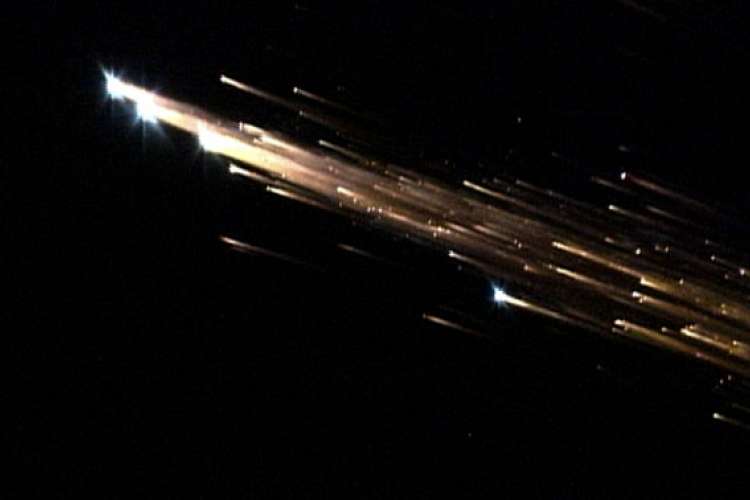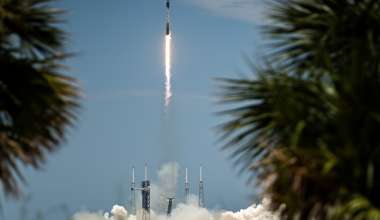Witnessing the reentry of a human-made space object is a breathtaking –and rare– experience. But how can you tell if what you saw was a meteor or the reentry of a human-made object? The similarities between meteors and human-made reentries can be significant and often lead to confusion. Many Aerospace experts at The Center for Orbital and Reentry Debris Studies (CORDS) have been asked how one might distinguish natural meteors from human-made object reentries.
Space debris is human-made and comes from objects that people launched into Earth orbit. It is usually moving parallel to the ground, at a speed of about 7 km/sec or 17,500 miles per hour. The reentry can occur at any time of the day. These reentries can often look like shooting stars (meteors) with a bright central body followed by a long, dazzling tail and often break into numerous fragments.

However, meteors usually come from natural debris left over from the formation of the solar system and are typically in orbit about the sun. As the Earth swings around the sun, it encounters meteors as it sweeps through space at 30 km/sec, or 67,000 miles per hour. These meteors can hit the Earth at all angles and from all directions, and only occasionally appear to be moving parallel to the ground. Meteors are often seen near dusk, when the sky overhead is facing the leading edge of our motion around the sun. Meteor showers can appear to radiate from a particular point in the sky (e.g. the Leonids or Geminids).
So, how can you tell the difference? The general rule-of-thumb is that natural meteor reentries happen quickly and typically last less than a few seconds while human-made reentries happen slowly, and typically can last 20 – 90 seconds or more.
- If an object moves slowly and steadily across the sky at a speed similar to how a fast aircraft would move, and it is trailing a long glowing streak behind it, it is probably a reentry.
- If there appear to be a tight cluster of bright points all moving in the same direction at similar speeds, and all leaving streaks behind them, then it is very probably a reentry breakup.
- If the object is moving extremely fast, and the event is gone in a flash or a few seconds, then it is very probably a meteor.
- If there seems to be a single object, or it appears to explode, then it might be a bolide meteor.
Space Object Reentry
This video taken by ESA from an observation aircraft shows a close up view of the ATV-1 spacecraft reentering over the Pacific Ocean after completing its ISS resupply mission.
(Credit: ESA/NASA)
This NASA video of JAXA's Hayabusa spacecraft, also from an observation aircraft, shows another example of a space object reentering the Earth’s atmosphere.
More space object reentry videos, as seen from the ground:
CZ-3B Rocket Body Reentry
GOCE Satellite Reentry
SL-4 Rocket Body Reentry
Meteor Atmosphere Entry
Meteors entries typically do not last as long as human-made object reentries, as seen in the short video below of a Draconid meteor entering the atmosphere.
(Credit – ESA)
More meteor entry videos, as seen from the ground:
Meteor Entry over Russia
Meteor Entry over Florida
Meteor Entry over Thailand
Atypical Examples
On very rare occasions the meteor vs. human-made object rule-of-thumb doesn’t work. This occurs when the speed or flight-path angle of the object in question mimics values that are more typical for objects in the opposite category.
For instance, a human-made space object might reenter the atmosphere at a steep enough angle causing its reentry to last a much shorter duration than most reentries. An example of this was seen during the reentry of the WT1190F spacecraft on 13 November 2015.
Video 1
Video 2 (video is in slow motion)
There are also examples of meteors lasting tens of seconds in duration. For example, the Peekskill meteorite, which reentered over the Eastern U.S. on 9 October 1992, had a very shallow flight-path angle that closely mimicked that of a human-made object.
If you believe you may have seen a space object reentry, please fill out our Report Reentry Sighting form








